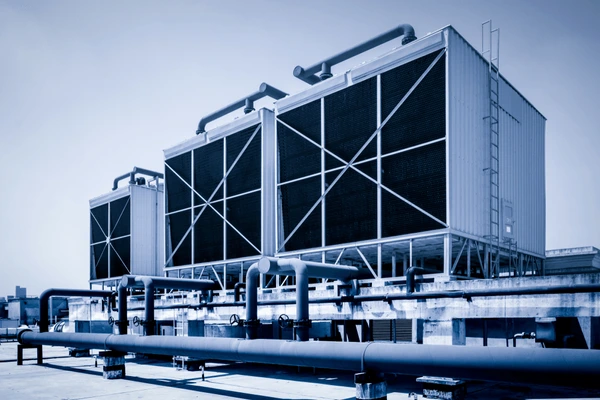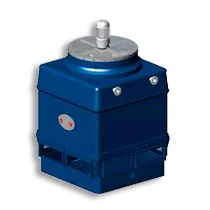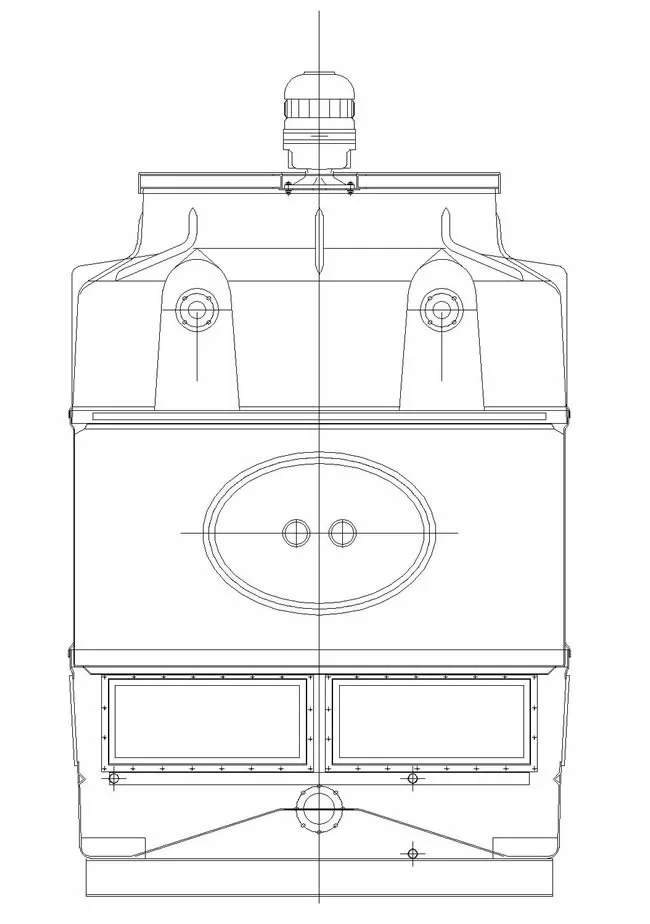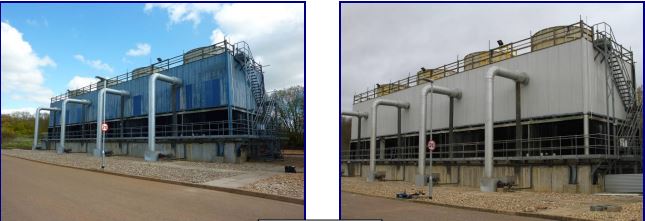Now we’ve covered the different designs of tower and my ‘non-biased’ view of closed-circuit ones (you can still have one if you want one), there’s the decision on what the cooling tower should be made of. This is something that cooling tower manufacturers get very het up and passionate about, and clients…less so. However, it’s worth considering as choosing something durable could mean the difference between seeing another cooling tower sales rep in the next 5 years or next 25 years or potentially, if you choose wisely, never again*. *Dependent on your age, the sales rep’s age and any underlying health conditions either, or both of you have.
Steel Cooling Tower Casings
Steel is still the most prevalent casing material in the UK cooling tower market due in part to our industrial legacy and familiarity amongst engineers and contractors, who see it as a robust material..Grrr. I have however, known engineers to apply Johnson’s Baby Oil† to stainless steel cooling towers such is their love for them, gleaming in the sunlight….I digress.

Steel also has high structural strength and fire-resistant properties. It comes in various options, including galvanised, coated galvanised, 304 and 316 stainless. Looked after well, a 316 or 304 SS tower will last a very long time. There are some out there my father installed back in the 80’s and they (and my father) are still going strong albeit for a few replacement consumables…I’m referring to the towers…mainly?
Of course, it’s not all sunshine and stainless and on the downside for steel, it requires maintenance and rust treatment, if not stainless, and is constructed from bolted flat panels which are prone to leaking. There is a difference between 304SS and 316SS which is important to consider in a cooling tower environment. Key advantages of 316SS are its chloride resistance whereby the molybdenum within it enhances resistance, whereas 304SS is more prone to pitting and crevice corrosion. 316SS has a longer lifespan and is better suited to coastal, chemical or treated water (which a cooling tower would be operating with. Stainless options are relatively expensive compared to galvanised steel (don’t buy a galvanised tower unless you really like seeing your cooling tower sales rep) and coated galvanised variants. Although coated steel is far cheaper, it has the potential for damage to the surface, which leaves you with the potential for rust and then you’re back to a galvanised tower and organising Christmas get-togethers with the sales rep.
GRP Cooling Tower Casings
GRP (Glass Reinforced Plastic) is plastic (usually polyester or vinylester resin) reinforced with glass fibres. It is Inherently corrosion-resistant, therefore Ideal for coastal or aggressive atmospheres. Its lifespan is long, there are some GRP towers out there which have been in operation for over 60 years (as long as Dad). Where using moulded construction there are fewer joints than in steel towers therefore less prone to leaking. Biocides can be added to the polymer to provide additional protection from bacteriological attacks. For the creatives amongst us, it can be coloured aesthetically to suit the surrounding environment. It is also lightweight so easier to transport and install.


While GRP has many strengths, it’s not perfect. It isn’t as fire-retardant as steel, although fire-retardant options are available. It is also not as widely recyclable as steel, although its long life should be taken into consideration when establishing its carbon footprint. Price-wise, it’s comparable to stainless steel but more expensive than galvanised or coated galvanised steel.
Timber Cooling Tower Casings

The only other type of material that you will find in cooling towers is wood; however, these are now few and far between and have largely been replaced by GRP and steel equivalents. Over time, the pressure-treated wood begins to delaminate, where the wood layers begin to separate through the constant wetting and drying within the natural cooling tower environment. Refurbishment can be an option during the early stages of degradation, and steel and GRP can be used within the tower to replace damaged wooden components. A regular structural and condition survey is a must to ensure the safety of the structure. Something you can see in our case study with Guernsey Power Plant ->
Want to explore which casing is right for your needs? Contact our experts today →
